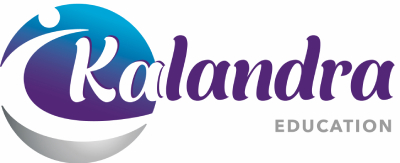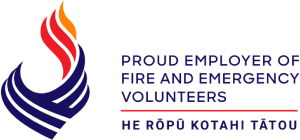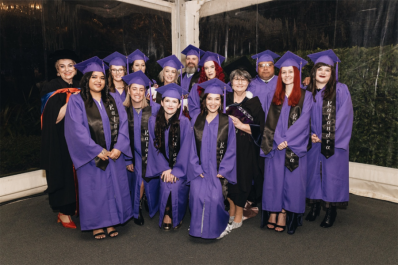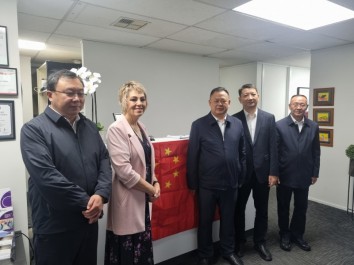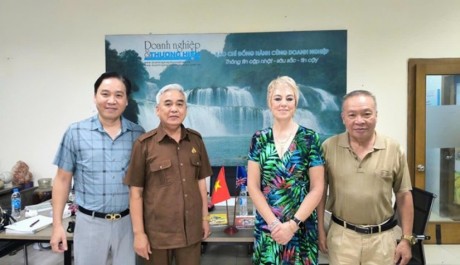Trends in Training and Education
A Presentation by Dr Christine Clark, on 2/11/2020 at the Aging Asia Conference 2020
For those of you who were present at the welcome from Janice today you will have heard about how she and her team are living her vision of improving the lives of older people and doing that by connecting people throughout the world and informing policy. This session is based on the experiences of Kalandra in fulfilling our Vision of improving the lives of older people. The most impactful and effective way we can do this is to offer training to those caring for our older people and to ensure that this training is easily accessible. The only way we can achieve this is to use technology. Now if someone had told me years ago that health care could be taught online, I would have vigorously disputed this, however it can be done, and we shall explore very briefly how.
Imagine being able to train 1000 staff members online for a fraction of the cost of face to face and these 1000 staff still being able to work and have the same or improved productivity output.
Add to this the bonus of being able to reduce the cost of care because your staff now have the knowledge to prevent patient deterioration, can work smarter, use resources more effectively and can train others. Your staff are happier because they understand the health needs of their patients, who are also more content, and you now have much improved staff retention. At the same time, the care your team is providing is so much better, families are happier, and the marketing potential has grown hugely as your trained staff are now a point of difference to your competitor.
Morally of course there is also the added benefit that your patients are now receiving care based on knowledge. Your staff have an understanding of what is happening to the patient and can now provide the best possible care, quickly and effectively.
So often care that is provided to older people is based solely on fulfilling really elementary needs and as there may be a lot of patients and many demands this care is usually very rushed. It is of course easy to shove a spoon of food into someone’s mouth and hold it there until they eat it, and neglect to ask them if they want seasoning or if it is warm or cold enough. It is easy to place a person into the shower assuming the water will clean them and then shuffle them out and quickly dab a towel over them. This type of care is quite common and usually happens because the care person does not know any better, they do not know how to actually show caring, cannot manage their time properly and do not understand that they are in fact actually causing harm to the patient.
We will briefly explore healthcare itself, touch on a little of the history behind distance learning which will establish that using technology is certainly not a new process in education and then we have classified e-learning into two types. The virtual classroom will be introduced, and we will examine the tensions that I believe exist between teaching health care and using the online method.
There are of course advantages to online learning for both the learner and the employer which will be discussed and as there are advantages, so too are there disadvantages. Finally, we will have a quick look at the future of e-learning.
Health care is about three things: understanding a patient needs and then providing the appropriate care whilst demonstrating that ‘caring touch’ - the kind word, the understanding smile, the hug.
To understand the patient’s requirements, we need knowledge of the life and social stage the patient is at and of conditions they have.
This is predominantly taught in theory.
To provide appropriate care we need to know what care is required and how to apply it correctly.
Learning this is a mix of theory and clinical practice
To demonstrate caring we need to understand the whole person and to have heart. Some of this comes from teaching but most of this is intrinsic behaviour that can be encouraged, and this is usually in a face to face situation.
Aristotle said that “Educating the mind without educating the heart is no education at all.”
And Benjamin Franklin adds to this saying that the “want of care does us more damage than want of knowledge”.
so, a major consideration is how do we teach clinical skills and develop caring if our healthcare training is predominantly online?
History tells us that in education we make the best use of what we have to impart knowledge which includes the ability of teaching skills and in actual fact using whatever advances are available, has meant that there has been distance learning for hundreds of years.
Distance learning is of course not new and was directly influenced by the desire to spread specific information to a wider audience the mode of which was determined by the method of communication available at the time.
The first recorded instance of distance education was in 1728 when a gentleman offered shorthand courses by letter.
Caleb Phillips placed an advertisement in the Boston Gazette seeking students eager to learn shorthand through weekly mailed lessons. There is no record of how successful this was, and it was not until over 100 years later that the first UK based course was announced and that too was shorthand. Sir Isaac Pitman is acknowledged as developing the first ever correspondence school in the UK (1840).
The first correspondence school in the United States was founded in 1873 by Anna Ticknor with the aim of introducing young ladies (aged over 24) to regular studying. During the 24 years the Boston Society to Encourage Studies at Home operated, it enrolled over 7000 students and employed over 200 tutors. Similarly the Colliery Engineer School of Mines (currently called the ICS Learn, International Correspondence Schools) established in Scranton (Pennsylvania) in 1889 targeted primarily men, focusing on technical and practical education, assisting them to pass safety tests and reduce the accidents occurring in mines.
Jumping forward thirty years the advent of radio produced another medium of communication and in 1922 multiple radio stations in the United States began broadcasting health information series followed by exercise programmes.
Another thirty year jump and this time Television provided the medium of learning and in 1953 the University of House made distance learning history when it began offering the first televised college classes on KUHT (Houston PBS), KUHT ran 13-5 hours of educational material each week, predominantly in the evening to encourage those working to participate.
Another 30-year jump and the first online programme as we know it was offered by the University of Toronto (1984).
Twelve years later the first fully online University was opened when Glen Jones and Bernand Luskin launched Jones International University, the first accredited and fully web-based university (1996).
Interest in online learning quickly grew and as an example in 2003 the Blackboard Learning System staff announced that 40,000 instructors were teaching 150,000 online courses to more than 6 million students, across 55 countries. Pre-Covid it was estimated that 1 out of 4 college students were enrolled in at least one online class.
93% of all brick and mortar colleges offered online courses and we cannot discuss online learning without mentioning MOOC courses which cover a massive number of programmes, taught a variety of ways and which have been in existence for over ten years with more coming onto the web every day.
Broadly speaking there are two types of e-learning: supported learning where the student is part of a virtual classroom with a dedicated lecturer and
Unsupported where the learner accesses information online and there is little interaction or involvement with the training organisation.
There are benefits of both types of e-learning, however it is the supported model that I believe is more applicable to healthcare, especially when clinical skills and the teaching of actual caring skills are involved.
This method uses a virtual classroom like a tradition one.
Students enrol and are assigned to a course, a lecturer and have designated classmates.
They can talk with their class at any time, joining in discussions, sharing information, asking questions, accessing quizzes, webinars, zoom meetings and receiving knowledge.
The supported course provides an external structure and regular lecturer-initiated contact.
It has scheduled ‘meetings’ and class-based discussions.
It is a rich and rewarding experience if it is a well-planned, structured, and supported programme.
The non-supported course usually has material that provides high quality information, has a lower price associated with it or may be free and can be accessed at any time. It may however only have very limited contact with a lecturer and that will be student lead.
There would be no clinical support and no formal assessment activities however there is a place for this type of course, especially in providing introductory material or updating knowledge when cost is a factor.
The lack of clinical support is of concern as healthcare relies on the care giver being able to provide certain skills correctly and this is difficult to ensure if there is no feedback system in place as in the unsupported course.
In the face to face world the student has a lecturer who shows them a skill and they then repeat it and practice it, however in the e-world there is no one beside the student showing them exactly what to do, how much pressure to apply etc , nor to provide the appropriate feedback quickly.
However, there are a few ways around this. A lecturer operating from a distance can demonstrate a skill over Zoom or by using virtual reality. However, it may be sometime before the student gets to practice or apply it and there may be no one to check that it is ok. The student can sometimes take a photo or a video of themselves applying the skill and send that to the lecturer but there are time delays and privacy issues.
There is of course the student who is working in healthcare and learning part time, perhaps taking night classes.
This student can access their colleagues for help after a skill has been taught, however it is up to the initiative of that student to arrange this and they may feel reluctant to do so and their colleagues may not share good practice.
Ideally online learning is used in combination with a short clinical skills session which is face to face, sometimes called the blended learning model.
Commonly the students access information online and then will attend a face to face clinical class at a central point.
This does restrict e-learning to a region and can be quite clumsy and has additional cost of travel etc. alternatively the students can gather in a place with a Nurse who has been asked to work with the online lecturer and who has been properly prepared and because the nurse will be local many of these ‘hubs’ can be organised. The lecturer zooms in and demonstrates the task, which the nurse now also shows the students and then watches them practice it. The Nurse becomes the extension of the lecturer.
The use of Virtual Reality or mixed reality can assist with the ‘almost’ real scenarios and teaching, however this does not assist with assessing that the student has understood, and can apply the knowledge and skills, whereas having a face to face lecturer does cover this.
Ensuring that the skills being taught have been understood and can be applied by the student is incredibly important in health care.
Knowledge comprehension and retention can be assessed simply by providing an examination of some sort, however health care is also about performing tasks correctly and about showing caring which is the physical interaction between the patient, family, staff and sometimes the colleagues.
The conundrum of real time and reality based clinical and caring based assessment within e-learning continues.
It will be solved and there are some attempts at this, however until this technology is in place the fact that we can assist a multitude of people gain accurate knowledge and have some indication of skill performance and caring expectations is an incredible achievement.
The fact that the quality of care and caring cannot be accurately assessed may be a drawback however the advantages of e-learning are huge.
The benefits to the student are many and varied:
• They can learn while they are still working as it is not necessary to go to a class and this learning is in an environment of their choosing, reducing travel and accommodation costs significantly.
• Feedback is fast and reliable, and students can easily see what is coming up
• The contact with the tutor is quick and there are a few ways to do this.
• A great example is being set for the family and community as they see the person learning and gaining in so many ways.
• The learning is structured and time guided, so the student learns time management and fulfilling expectations.
• The class could be very diverse in culture, age and experience providing a rich, global learning environment.
• Different learning styles are catered for as the online includes many ways of providing information.
• lecturers can see behind the scenes and will easily identify if a student is struggling
• Learning although time framed is self-paced as all webinars are recorded so the student can access them anytime.
• learning is faster (40 times faster than face to face)
• Students confidence and self-esteem increases as they progress through.
• It is a very cost-effective way to gain knowledge.
• Most people have a digital device to learn on or can easily get one.
• Self-reflection is taught which encourages the student to analyse their own practice and look for improvements, so this is a kind form of performance assessment which benefits everyone.
• Extra learning can be quickly inserted in response to current situations – for example, a topic on spread of infection was inserted into all our programmes when COVID-19 started.
• Students feel safe to ask the question they would not ask in a face to face situation
• Students can choose from a multitude of study and from anywhere in the world
• Students apply what they learn, showing the patient and their family the care, they deserve and in return they get this back from them.
• This method usually improves written communication which may be in another language. It is a direct, effective and an applied method of learning another language.
• Adds to employability
• Retention of information is improved by between 25 and 60%
The organisation benefits from having an employee who:
• Is still able to work while learning
• Is learning information specifically related to the job or proposed job
• Gains confidence, helping others to improve their knowledge and care
• Provides care based on knowledge, understanding their patients.
• Learns time management and problem solving more effectively
• Is happier and not as liable to look for other work
• Uses resources more effectively
• Provides a higher level of care that minimises risks to the patient, reduces costs whilst still showing caring
• Contributes more effectively to the organisation
And the organisation benefits over all by:
• Becoming a point of difference and marketing their employee’s skills and knowledge
• Having employees who can identify risks before they become a problem
• Providing staff who can train others
• Knowing that the improved knowledge will help to decrease costs over the organisation
• Being able to implement improved policies to staff who have better understanding
• Training large numbers of staff at any one time who can support each other, improving morale and assisting completions.
• And can diversify and extend into other areas of care as they know their staff can obtain appropriate training.
Difficulties associated with e-learning:
There are however a few drawbacks for the student who is learning healthcare online:
The student needs to learn time management and develop a structured study regime which is of course probably in conjunction with work and family commitments.
They need to become disciplined and implement a good work ethic, understanding that this is for a short time and that the benefits for all far outweigh any disadvantages to themselves.
Access to a device that supports this type of learning such as a computer or mobile phone and adequate internet access is of course vital, and it may be this that complicates the online provision.
Bias against online learning by family, friends, and employer, however this should have reduced post COVID-19.
Distance Learning in response to crisis
Remote learning in response to crisis was first recorded in the US when in 1937 the Chicago education system used radio to access their students during a polio outbreak.
In earlier years the response to other similar crisis such as the 1918 Influenza pandemic, various measles and diphtheria outbreaks, schools chose to use medical inspection, social isolation or implemented full shutdown, in some instances this may have been for up to four months.
This sounds so very similar to the recent Covid-19 crisis. During this crisis it is estimated that 1.38 Billion students were unable to study.
A survey undertaken by UNICEF found that 94% of countries implemented some form of remote learning however this was impacted by access to technology, cost, and age. Those who were wealthier or who had Government assistance were able to access the digital devices they needed, those who were younger were more easily able to use them and those who lived in the more westernised countries had more reliable internet service.
Certainly the response to the learning situation was rapid and in February of 2020, only a few months into this crisis the largest online movement in the history of education began when the Chinese government instructed a quarter of a billion full-time students to resume their studies
When considering the future of healthcare and learning we must keep in mind the huge increase in the use of technology related to both areas and the reasons that determine this necessity.
The need for workers in considerable numbers is becoming increasingly apparent.
We are very aware that manpower is not sufficient to cope with the estimated 524million aged people living in the 15 main countries of the Asia Pacific region alone nor of the rapid growth of numbers (a further 100 million in 5 years) and their multiple health issues and thus we need to access technology to assist provide care.
Technology to ensure safety, assist with communication and mobility, provide some comfort, and even assist with some care tasks are now common as we simply do not have the workforce capability. This was identified in the Ageing Asia Silver Report 2020 that states that the aged care market within this region is estimated to be worth US$4,56 trillion dollars and that workforce capability and capacity was the third highest area of opportunity. This equates to a huge investment in training and in the technology that will be required to teach them. Much of this future workforce will be accessed from areas that will rely on technology to make training accessible and the large numbers of people needed will also dictate this more efficient and cost effective way of reaching out.
However, it is combining this method of learning whilst still teaching the practical skills of providing care and learning how to show caring that must be considered.
We know that online or e-learning will continue to increase at a phenomenal pace, with the overall market for online education projected to reach US$350 Billion by 2025 (it was US$18.66 Billion in 2019) and of course COVID-19 has provided a credibility that may not have existed in some people’s minds until now.
Benjamin Franklin is reported to have said that an investment in knowledge pays the best interest. This is significant investment in the future of our older people as well as in our workers.
Distance learning, used to teach specific subjects including skills, has been around for nearly 300 years and the ability for millions of people to access this is now very real.
So too is the reality that the numbers of older people requiring care will soon surpass the number of people able to provide it and we would all agree that our older people deserve to have the very best of care possible. To provide this we must access and increase the use of technology including the use of robotics to supplement and replace humans. However, it will be very difficult for this technology to provide the very important reactive emotions and gestures that we as humans share - the smile, the touch, hug and even tear.
The learning - combining the science and the art of caring will be taught online perhaps in a different form to what we now perceive - but we must ensure that we never, ever lose the humanness of care.
Back to News
